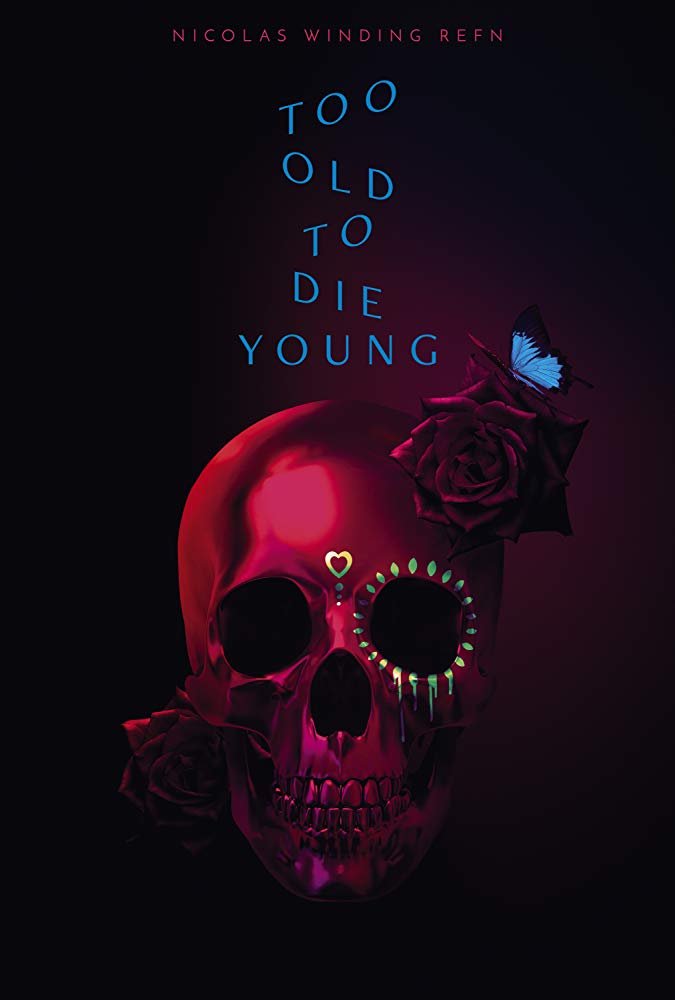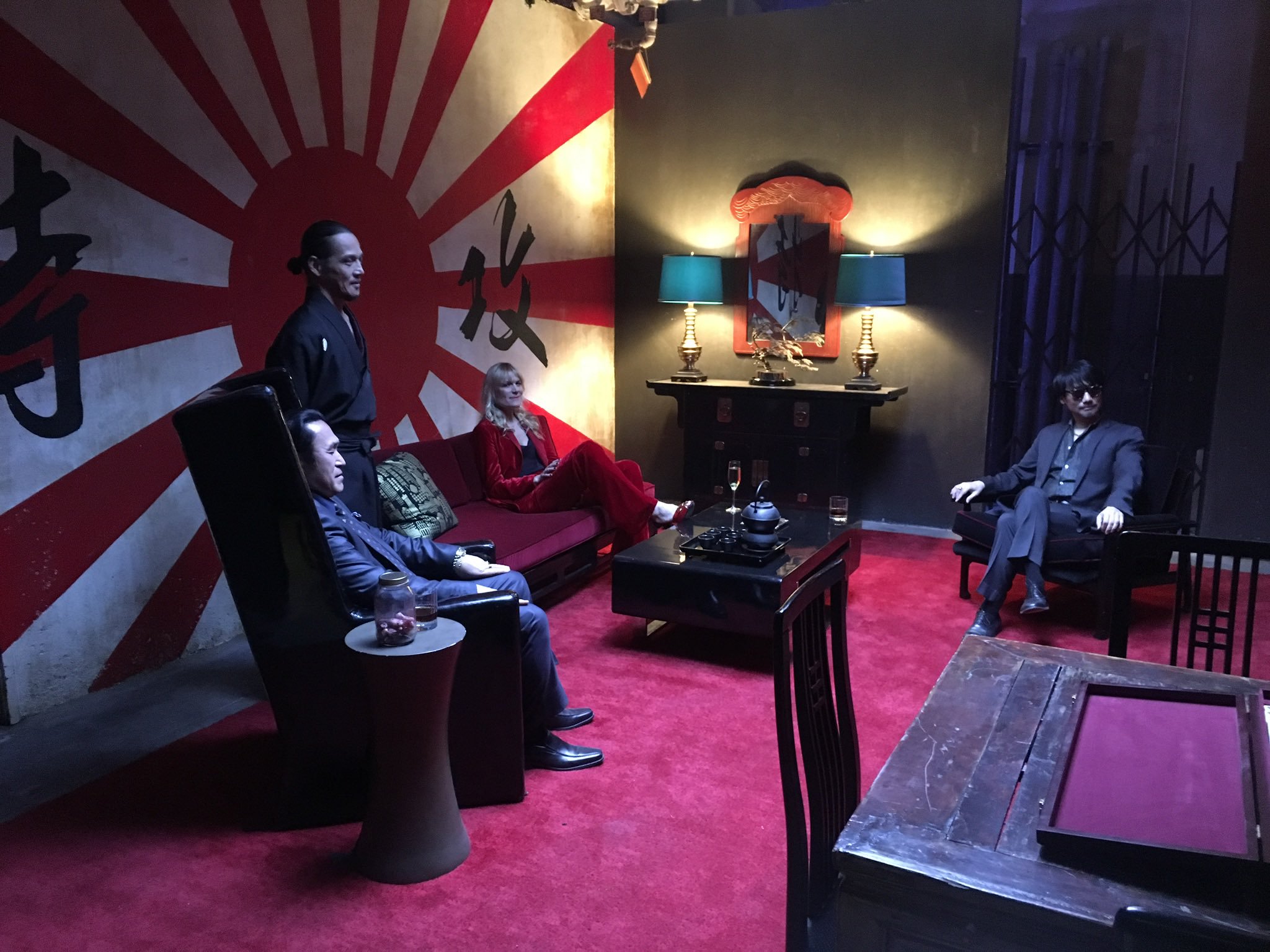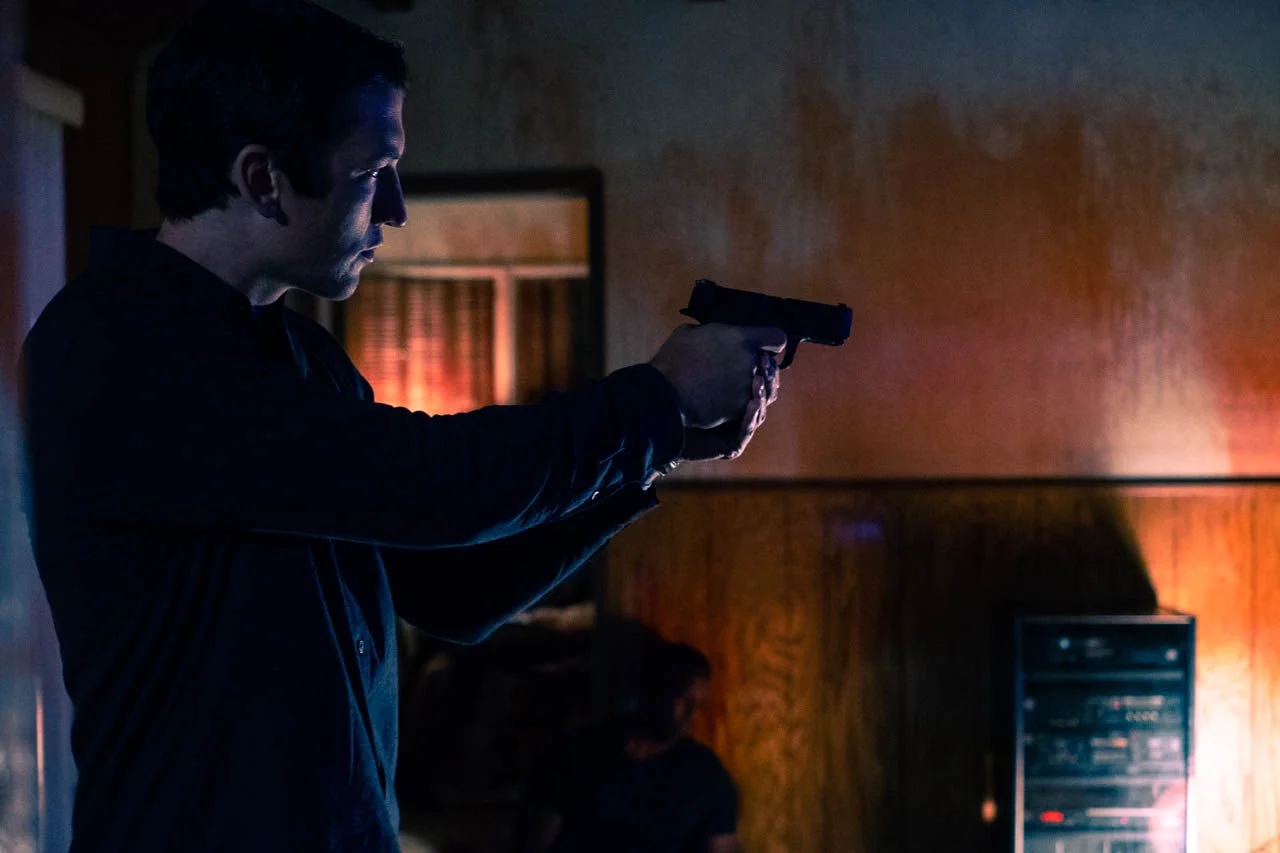Too Old To Die Young
Pop Disciple Film & TV Reviews by Sean Shepherd
One thing must be made clear before anything else, this is a very auteur-driven project. Anyone familiar with Nicholas Winding Refn’s past work (Drive being the most well known) will recognize it immediately. High-saturation color schemes, heavy emphasis on atmosphere, borderline surreal in its imagery and dialogue. Determined to move at its own pace, for its own reasons. Sprinkle in varying doses of disturbing subject matter and occasional bursts of beautifully shot ultraviolence.
At first, Too Old To Die Young appears to be a nihilistic cop show. But after the first few episodes, it becomes clear that it has an entirely different focus. It doesn’t care about cops against criminals. It cares about surviving in a landscape where such distinctions are useless and arbitrary. When one character is asked if he likes Mexico, he responds that he does because “It’s the future. There’s no law. Just survival.” It’s a question of whether to give in to that mentality or to fight it.
Martin (Miles Teller) is so embedded in it that he barely seems to notice. He leads a dual life as a cop and a hired killer, a perfect illustration of the rule of the world he lives in — complete moral ambivalence. The emptiness of it all begins to bother him, however, and he asks the crime lord to only give him targets that are deserving of execution. What’s more, he refuses to be paid for his services.
Standing opposite to Martin is Jesus (Augusto Aguilera), the man that kills Martin’s partner in retaliation for the murder of his mother, a powerful cartel boss. Whereas Martin is attempting to find a purpose for his violence, Jesus is unerringly focused on one thing: reclaiming what was lost when his mother was killed. He joins the Cartel under the wing of his uncle, one of its leaders. He befriends its inheritor, Miguel, and receives his blessing to retake his mother’s former holdings from the crime lord Martin works for. This sets them inextricably on a collision course that much of the series builds up to.
The last principle characters comprise what can only be described as a vigilante cult. A victim’s advocate working for the department of justice who collects the names of wrongdoers, (Jena Malone), and Viggo (John Hawkes), a former FBI agent who hunts down the targets.
Through these characters, we see a vision of a world dying of a thousand gangrenous wounds, hidden beneath the thin cloth of civilization. Make no mistake, Too Old To Die Young is relentless in its display of human ugliness. Sex trafficking, rape pornography, torture, incest, child abuse, to name a few. It does not, however, show very much of these terrible acts being carried out. Instead, Refn’s camera lavishes attention on the tense, disturbing, and humiliating moments that lead up to them. The imagination is so filled with unease that by the time the atrocities start, showing them would be almost pointless.
What’s worse is that the camera teases the viewer with shots such as women locked in horse stables, being given their pittance of water just out of earshot of the small town in the distance. Such moments demonstrate just how close these things are to where we live, and how easy they are to hide when no one is really looking.
On that point, the police are consistently portrayed as apathetic, abusive, or simply ridiculous. Every scene in the homicide department sets a tone so absurdist it becomes surreal, like an episode of The Office directed by David Lynch. Martin’s fellow officers in homicide seem more concerned with pranking each other, putting on biblical farces, or talking about their dicks than solving crimes. The head of the homicide department advises Martin to literally roll a dice to decide which lead to chase. On a Friday celebration, the whole precinct chants “Fascism!” with obscene, bug-eyed glee. Damian, Martin’s crime boss, hears a conversation between Martin and a coworker and asks, in an appalled tone: “Please tell me that motherfucker is not a real cop.” The fact that Martin, a deadpan murderer, plays the straight man to all this insanity just shows how far the world has fallen.
What’s surprising is that the vigilante justice that Martin involves himself with is presented as no less brutal or atavistic than the world they live in. Diana couches everything in the language of a spiritual healer and behaves as if she’s some sort of medium. Viggo had a near-death experience that propelled him toward the murder of evildoers as part of a kind of religious awakening. A half-mad preacher prattles on about the hidden mystical power of the swastika. This spiritual and mythic dimension adds another layer to the imagery and musical choices of the series, and makes it unable to be dismissed as a neon-lit, more dreamlike version of Bad Lieutenant or Taxi Driver. One of the most clear examples centers around Viggo. A Wagnerian opera plays as Viggo removes his glass eye, sets it on the table, and his mother, sitting next to him, swallows it, evoking the image of the Norse God Oden offering his eye to gain insight into the secrets of the universe. This precedes the biggest killing spree in the show to date, cementing the connection of mystic power and violence.
Strange and brilliant strokes like this showcase the best of what Refn has to offer as a director, but the result could have been that much more powerful if the pacing wasn’t so abysmally slow at times. Refn has always danced to his own tune in that department, and sometimes, as in the film Drive, it really works for him. Any complaint is mollified by the incredible climax it all builds up to, so ultimately, the structure holds up. But Drive is a feature film, Too Old To Die Young is a series. One with wildly varying episode lengths. Some are the length of entire films, while the finale is less than half an hour.
Many scenes feel artificially long, owing mostly to infuriatingly slow dialogue — some conversations you can count ten seconds or more between each line. The second episode, centering around Jesus and his relationship with the Cartel, is by far the worst offender, clocking one hour and thirty-eight minutes, but it could easily be skipped, and not much context would be lost. The intention seems to be to further contribute to the fever dream atmosphere of the series, but the incredible camera work, otherworldly synth music by Cliff Martinez, and vivid color choices have that covered in spades already.
What’s baffling is that Refn himself seems to agree. In an interview with IndieWire, he shared “It’s how my kids watch entertainment. They’ll find something, and they’ll drop in. If it interests them, they’ll stay.” He went on to say that streaming is an entirely new kind of medium, it’s not film or TV, and that he did not care whether people started in the middle or not. People, he adamantly believes, have entirely new viewing habits. Admittedly, it makes perfect sense for a director like Refn to relish the chance to experiment with the new medium in bold ways. But no one watches a streaming show by skipping the first few episodes; that’s one of the advantages of a streaming show. You never have to worry about being behind an episode. It seems absurd to assume that people would deliberately create that problem for themselves and skip episodes without knowing what it is they’re missing.
Further, if the earlier episodes are unnecessary to the experience, then it seems wasteful to have them at all, especially when they are by far the least interesting to watch and thus stand a good chance of turning people off of the series. There are many scenes and sequences that don’t appear to have any clear point. The final episode, less than thirty minutes long, shows a character going through a perfectly banal day: masturbating with VR, playing hooky from work, shaving, watching TV, and dancing alone in her house for nearly the entire duration of a song. These scenes take up a third of the episode and accomplish basically nothing.
This will undoubtedly be the most polarizing aspect of the show as a whole. Arthouse sensibilities aside, however, there’s still much to commend the series to viewers. A brave experiment, it’s probably the strangest thirteen hours you’ll spend on Amazon Prime Video this year, but it’s also one of the most memorable.
Listen to Cliff Martinez’s score for Too Old to Die Young.
Author | Sean Shepherd
Editor | Alex Sicular
Layout | Ruby Gartenberg

















